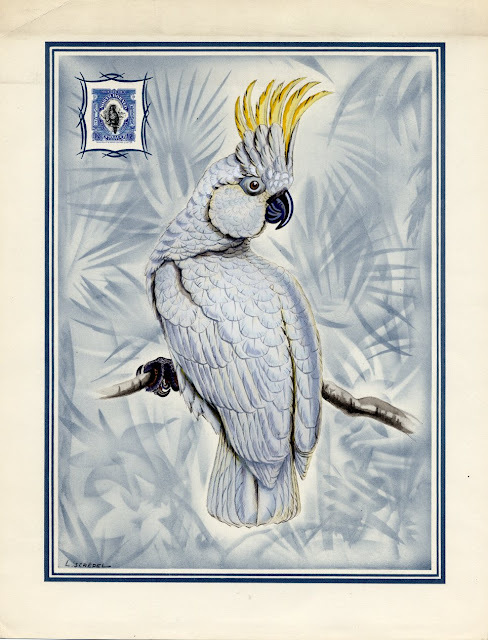Why Cassowary depicted in North Borneo Stamps?
Introduction
It's not like we have any cassowary, palm cockatoo or tapir in North Borneo, but why would these animals depicted in North Borneo stamps? One reason is that the North Borneo Company had a philatelic market in mind when designing these stamps. They are designed not only for postal purposes but also serve as collectibles, which of course increases the government's revenue further.
As a result, many North Borneo stamps are considered to be among the most beautiful stamps compared to other Commonwealth countries but remain relatively unpopular among collectors because of the mass production not matched by authentic postal requirements. As a result, many of the North Borneo stamps available in the market today are cancelled-to-ordered, which sell for a fraction of the value of postally used or mint stamps. Nevertheless, there are some interesting stories of the design in the second pictorials especially the cassowary stamp.
1. The Cassowary Stamp
Cassowary in general, is native to the tropical forests of New Guinea and not found anywhere in North Borneo. So why would this flightless bird chosen for North Borneo stamps instead of other birds? The answer is, it's a mistake in design! According to L. Shipman's Postal History of North Borneo (part III), the bird intended was Megapode (Megapodius freycinet) not a cassowary.
The intended bird - the megapode
According to Bertram E. Smythies in his book "Birds of Borneo", the megapode family is mainly found in Australo-Papuan region but they are also found in North Borneo by one island species on Labuan and its sattelites; and on the islands off the north coast of North Borneo, and in coastal jungle not far from Sandakan.
Supporting the theory that megapode was the intended bird, in the "Laws of North Borneo" published in 1936, the 24 cents stamp is referred to as megapode rather than a cassowary. It is therefore apparent that the intended bird was a megapode rather than a cassowary but an error in choosing the design may have occured resulting in the wrong design altogether. The stamps were recess-printed by Waterlow & Sons Ltd, but unfortunately, there is no record of the name of the craftsman who engraved the dies.
2. The Palm Cockatoo
The depiction of the Great Black Cockatoo is deliberate and not a mistake like the cassowary stamp. It is an unfortunate choice because it is never found in North Borneo and mainly found in Papua New Guinea-Australia region. Although undeniably the cockatoo stamp is beautiful and adds to the approximately 20 animals depicted in the whole North Borneo philatelic zoo, it lacks originality and real representation of North Borneo. Nevertheless, the depiction of palm cockatoo does not end for the 1909-1923 issues only but also re-engraved for the 1939 issue of the 2 cents stamp. Someone in the North Borneo company must love this bird so much!
3. The Malaya Tapir
The Malaya tapir is another unwise choice for the North Borneo stamp. It does not exist in North Borneo although fossils have been excavated at the Niah caves in Sarawak. But tapir is certainly a better choice than the cassowary and the palm cockatoo...








